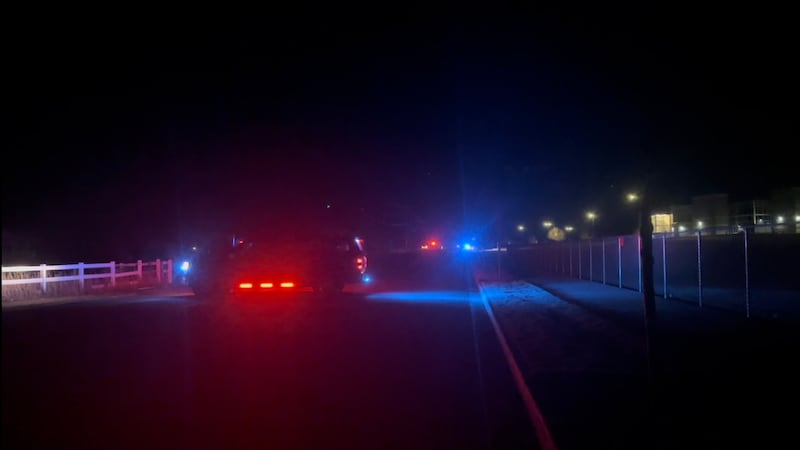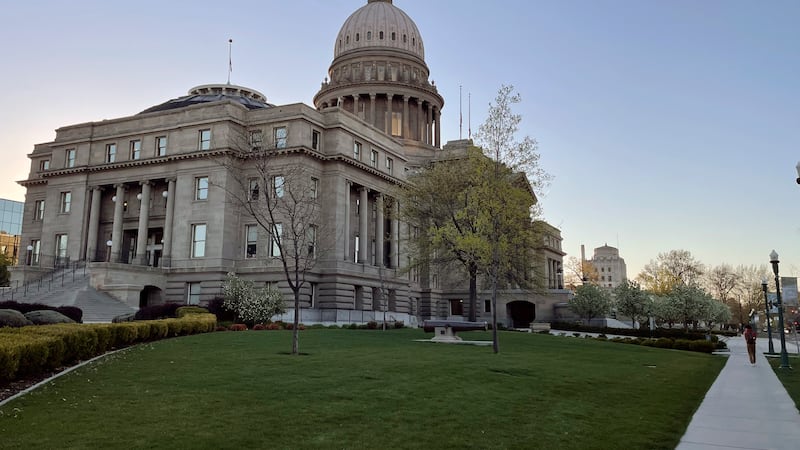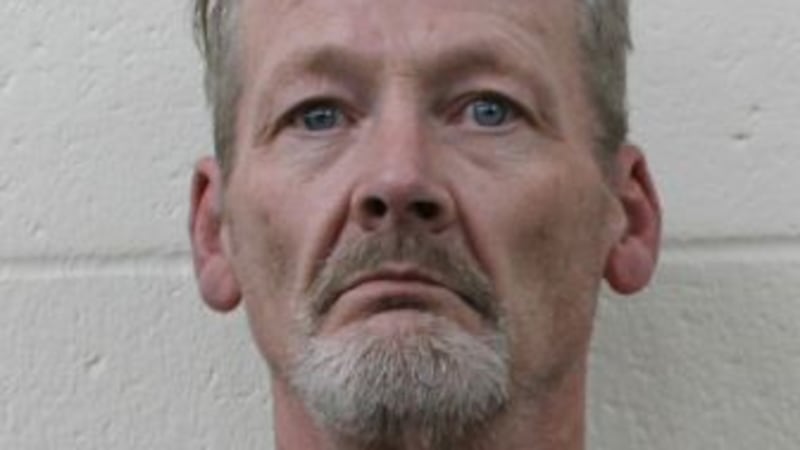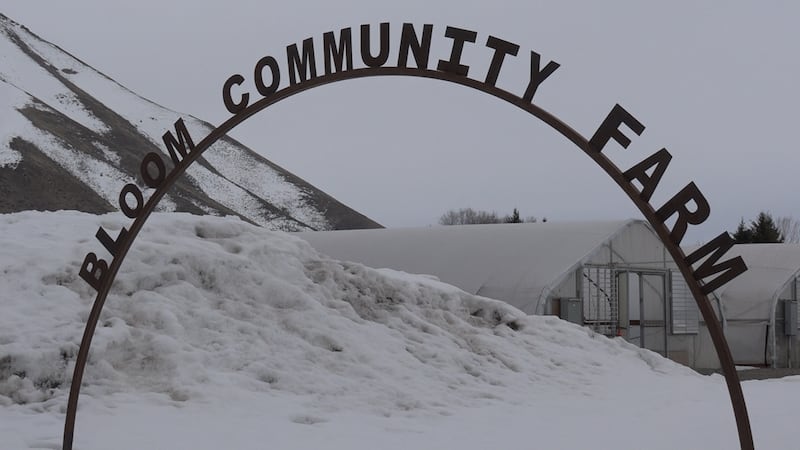Breaking down the Blaine County Climate Action Plan
BLAINE COUNTY, Idaho (KMVT/KSVT) — Blaine County has released its Climate Action Plan (CAP), a significant first step in fighting climate change at the local level.
The 151-page plan comprehensively overviews the county’s plans to combat the ever-growing threat. The process began in 2018 after Hailey resident Elizabeth Jeffrey read the United Nations report on climate change.
“2018 is the first time I’d ever read a summary of the report, and it freaked me out. I got the picture for the first time of how it would impact not just in 2050, but now and my life,” Jeffrey said.
At that moment, she spoke with other community members who were concerned about the global threat.
“We had a night; we got a fellowship hall and said you know anyone can come in,” Jeffrey said. “Thirty people came and two of those were city council members from Hailey.”
That meeting was eventful and led directly to hiring a sustainability manager on staff for the city of Hailey. As time passed, the coalition grew out of Hailey and into the surrounding communities in Blaine County, eventually building into the Climate Action Plan’s grassroots document.
“In October of 2021, there was a community charrette where we started laying the framework for the plan itself,” Sustainability Manager for Blaine County Andrew Mentzer explained.
While massive in scope, the plan focuses on four key areas: clean energy and green buildings, solid waste and recycling, land and water conservation, and land use and mobility. Each section outlines goals the county will attempt to achieve over several years. Starting with clean energy and green buildings, Blaine County will focus on reaching clean energy goals, an already underway initiative.
The goals are ambitious. By 2025, the county hopes that municipal electricity use will be 75% clean energy.
“There’s going to be some moving targets with a lot of our goals,” Mentzer said. “So, we’re working on some local solar programming and trying to scale and elevate some of those realities alongside Idaho Power, them being our primary power provider or parent power utility in the area.”
The goal also looks past 2025 and into the future: to have the entire valley on green energy by 2045. The group says that while this goal is lofty, it is not impossible thanks to the advances in green energy devices, which is where the second half of the task force comes in: the Green Building
“It’s a term that says, ‘let’s build out structures in a way that makes them as energy efficient, comfortable, and healthy as possible,’” Co-Chair of the Clean Energy & Green Building Task Force Scott Runkle said.
The Green Building has a few components, but it boils down to supply and demand and building future buildings to be as energy efficient as possible.
“The clean energy portion is focusing on increasing the supply of renewable energy to the valley, whereas the green building portion is focusing on decreasing the demand for energy as a whole, and that comes with like green building practices are huge components of that, and just retrofitting buildings to be more energy efficient and closing air gaps,” Sustainability Fellow for Blaine County Eve Preucil explained.
Along with the benefits of fighting climate change, these changes can also help human health in the long term, especially moving from gas stoves to electric ones.
“Gas stoves actually release so many particulates into the air that you’re breathing in and it’s a big risk for children, elderly people with Asthma,” Preucil said.
The final component of the Green Building is working to inform construction companies of building options. This would allow them to continue building upon the existing community, which would help add eco-friendly jobs to the valley.
The following section in their master plan involves solid waste & recycling. The goals here are straightforward, and the community relies on them to help achieve them. This section is focused on recycling and how to give items that are not easily recyclable a longer life cycle so they don’t simply end up in the dump.
“The tip of the spear for solid waste and circularity is ‘how do we kind of use less materials?’” Mentzer explained.
These decisions are likely to come down to individual household decisions, but the county is working with its already established partners within the Ohio Gulch Transfer Station, which is divided into three separate entities: the Southern Idaho Solid Waste District, Winn’s Compost, and the Blaine County Recycle Center. The goal is to increase countywide recycling to 50% by 2030 and to facilitate the expansion of green waste and food waste composting.
“You make coffee in the morning and then you use your coffee grounds and your compost as fertilizer and then that helps your plants grow, and then you use that, and rather it just going and releasing methane in the landfill it helps grow something,” Preucil said. “Another example is like having a yard sale when you have a bunch of junk in your house, and rather than just throwing it in the landfill you find someone that can find a use for it,” she continued.
Another option is to repair objects instead of throwing them away and buying new ones. If people do not have the skills, host repair clinics can help people learn a new skill and repair the broken item.
“We’re looking at repair clinics, which we’ve done two so far, where we have volunteers come who have skills in repairing everything; and people bring in their stuff that they would have taken to the landfill otherwise because they have no idea how to repair them, and our coaches coach them,” Jeffrey explained.
The third tenet of the plan focuses on land and water conservation. There are three core focuses. The first is how to create climate-smart agriculture.
“We have a lot of agriculture in the southern part of Blaine County, and so to assure that our farmers have really resilient structures and systems in places that will help them with these fairly large heat events we’re starting to see is a really important consideration,” Mentzer said.
This section notes how to maintain the soil’s health, including reducing pesticide and fertilizer use. The next step in creating climate-smart agriculture is increasing local food production.
“Trying to cut out the supply chain and just we have a huge thriving agricultural community; and so, getting those foods to the people here rather than exporting them, and how we can facilitate that and encourage more of that,” Preucil explained.
The final part looks at regenerative agriculture, which can include cover cropping and rotational grazing. These practices can help limit the amount of carbon released into the soil. The county plans to help preserve water for the foreseeable future by encouraging farmers to use intelligent irrigation practices, such as when it is cool outside or at night.
“We have them water every other day,” Sustainability and Grants Coordinator Emily Williams said.
The final section concerns land use and mobility. It focuses on using city design, public transit, and housing in an environmentally friendly way, which Mentzer described as a “three-legged stool.”
“So, when you put those three legs together, you end up with kind of a space where you know all functions of planning and kind of broader community throughput of transit, come together in a really thoughtful way that we think paints a better picture for our climate future,” Menzter said.
For the city planning aspect of the competition, the plan calls for reducing urban sprawl to help protect the environment around the cities.
“One of the things where one of the actions is making a land use planning toolkit, and so that’s just going to have a list of different policy instruments that municipalities could choose to use,” Preucil explained.
The vast project also considers the amount of land the cities already use and what they could use in the future.
“We want to make sure that where people are living and where new housing is going up is in a place that’s connected to pathways, multimodal transportation systems, systems that folks don’t necessarily get in their car to be able to service a lot of their daily needs,” City and Resilience Planner Emily Rodrigue explained.
The focus on city planning will not focus on expanding the roadways, which task force members say decreases the quality of life within the cities.
“I think one of the challenges our community has is the congestion on the highways and you can solve that in a couple of ways,” Runkle said. “You can continue to widen roads and that encourages more and more cars to come up, and that leads to more and more pollution and congestion and just overall decreases the quality of living in our valley. Or you can address it by building affordable housing so people can live in the communities they work at. I think building more housing that people can afford, making the streets bikeable is extremely important because that’s the positive side of thinking in this.”
Instead of widening the road, the task force emphasized that public transit, walkable cities, and other modes of transit will be crucial in the fight against climate change.
“How can we plan ahead to make sure that Mountain Rides has the capacity to service this growth through some public transportation? And then what are some options that we have for expanding our pathways network in Hailey,” Rodrigue explained.
The largest part of the plan, however, is ensuring the community is involved in every step of the process.
“We have 112 people in our task forces, and like I said they’re from all facets of the community, from technical experts all the way to high schoolers,” Mentzer said.
Copyright 2024 KMVT. All rights reserved.















